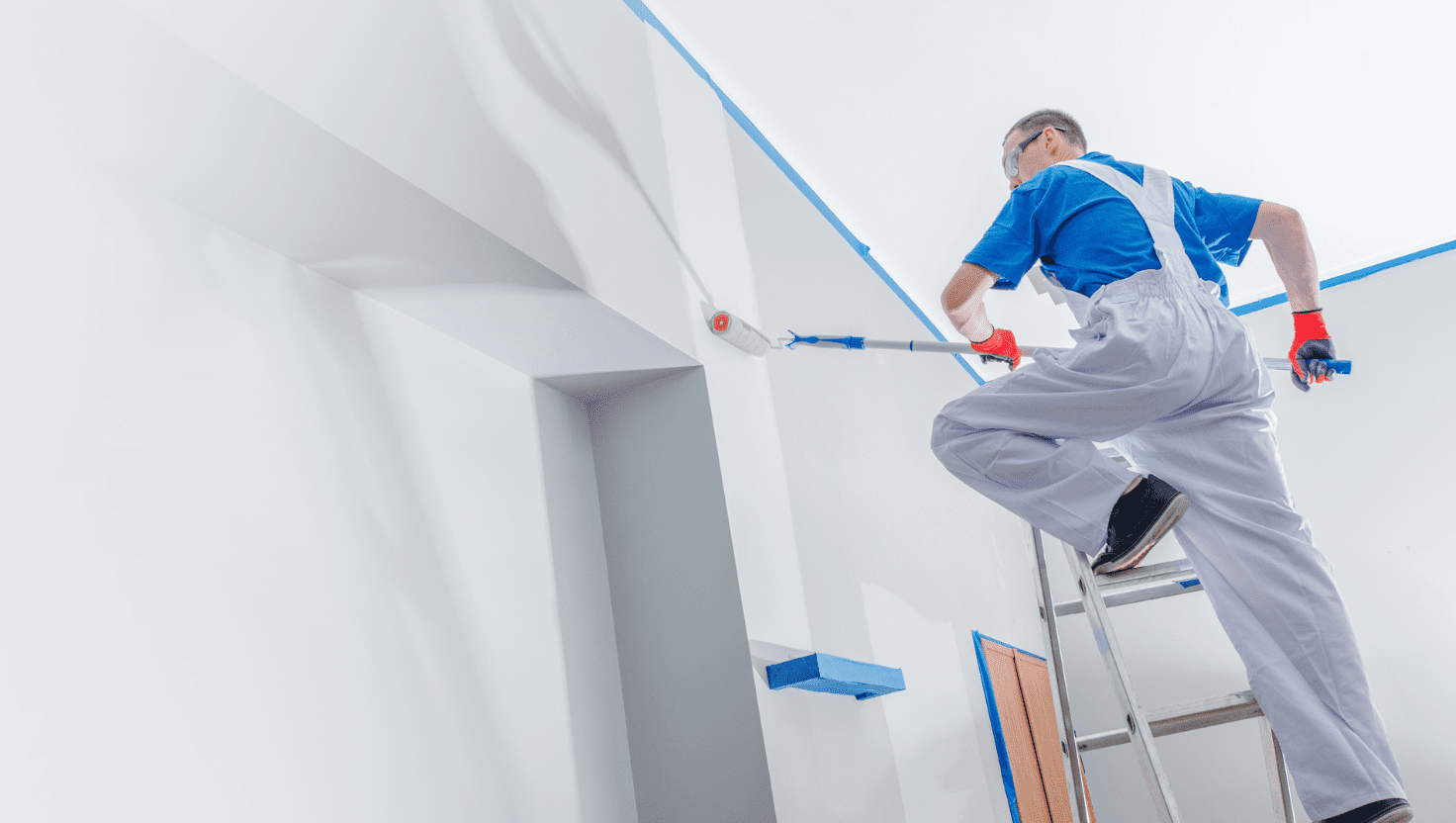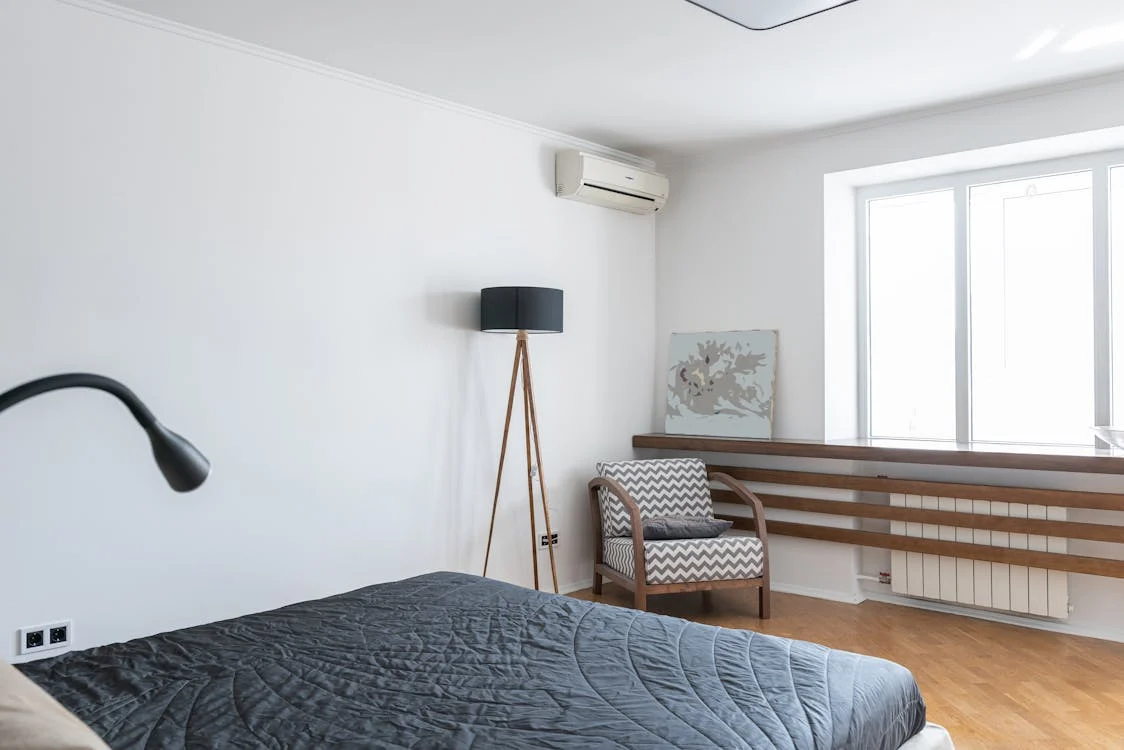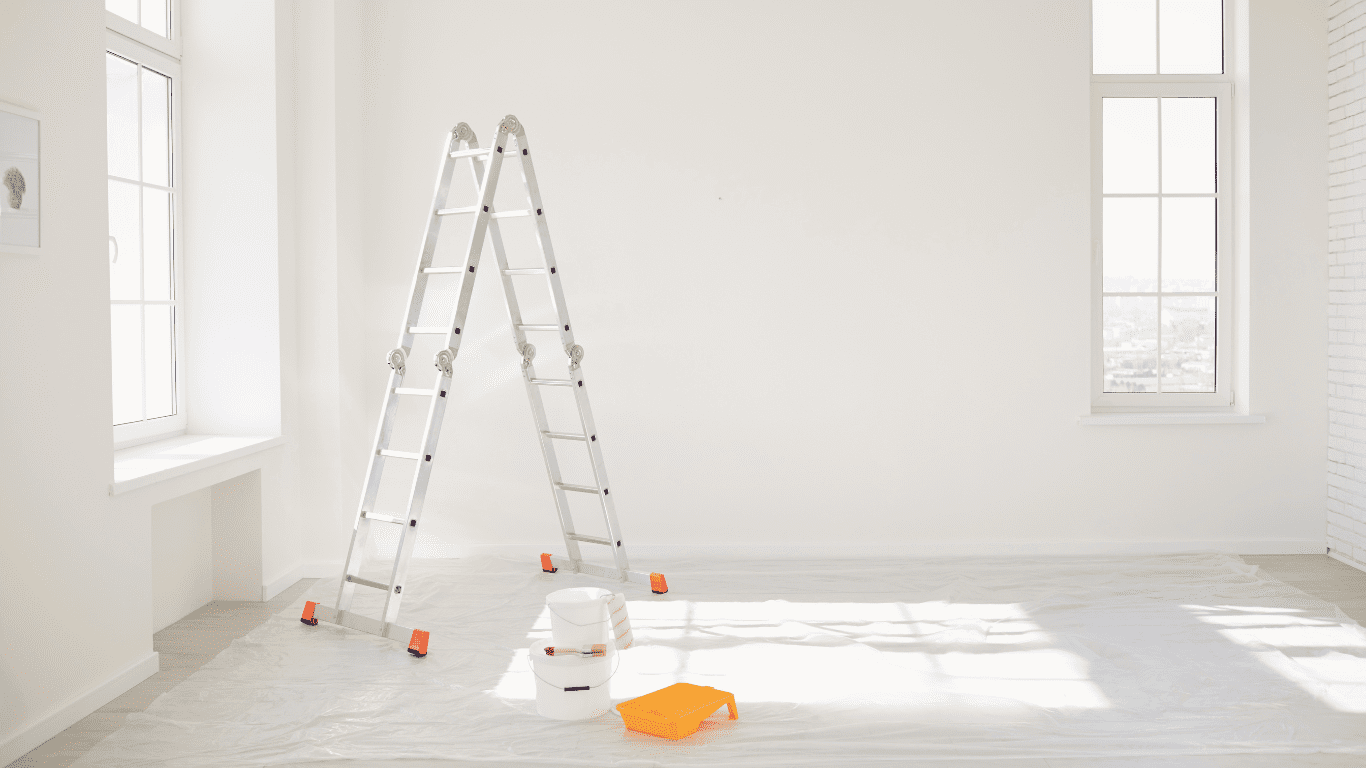When it comes to maintaining your home, exterior house painting is more than just a way to make it look good. It’s about protecting your investment from harsh weather and environmental factors. A fresh coat of paint not only enhances the curb appeal but also acts as a barrier against the elements, keeping your home safe from damage. This article will take you through everything you need to know about exterior painting, from the best times to paint to how to choose quality products that will last.
Key Takeaways
- Exterior house painting serves as a protective barrier against weather conditions.
- Timing is important; avoid painting during the rainy monsoon season.
- Invest in high-quality paint for better durability and resistance to fading.
- Proper surface preparation is key to a successful paint job.
- Regular maintenance and inspections can extend the life of your exterior paint.
Understanding The Role Of Exterior House Painting
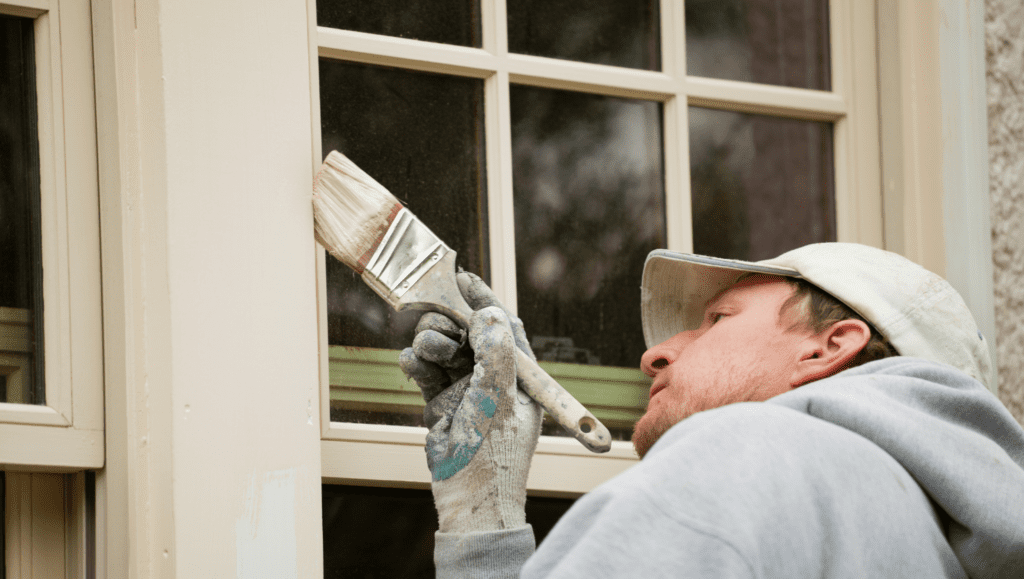
Weather Barrier Benefits
Exterior house painting does more than just make your place look good; it’s a crucial shield against the elements. Think of it as your home’s first line of defence against whatever Mother Nature throws its way. A good paint job acts as a barrier, preventing water from seeping into the walls, which can lead to mould, rot, and structural damage. It’s a preventative measure that can save you a lot of money and hassle down the track.
Protection Against UV Damage
The Australian sun is harsh, and its UV rays can wreak havoc on your home’s exterior. Paint, especially those formulated with UV-resistant additives, helps to reflect these rays, preventing them from breaking down the materials underneath. This is particularly important for timber and other susceptible surfaces. Choosing the right paint can significantly extend the life of your cladding and keep your home looking newer for longer. Understanding the impact of UV radiation on exterior paints is key to maintaining your home’s appearance.
Resistance To Humidity And Storms
Australia’s diverse climate means your home might face everything from high humidity to intense storms. Quality exterior house painting provides a robust barrier against moisture, preventing dampness and the associated problems like blistering and peeling paint. Furthermore, a good paint job can help your home withstand the impact of wind and rain, reducing the risk of damage during storms. Investing in weather-resistant paint is a smart move for any Aussie homeowner.
A well-maintained paint job isn’t just about aesthetics; it’s about protecting your investment and ensuring your home remains structurally sound for years to come. Regular inspections and touch-ups can go a long way in preserving the integrity of your exterior paint and preventing costly repairs.
Choosing The Right Time For Exterior Painting
Timing is everything, especially when it comes to exterior painting. Picking the right time can significantly impact the quality and longevity of your paint job. Get it wrong, and you might find yourself re-doing it sooner than you’d like. So, when is the best time to paint your house in Australia?
Seasonal Considerations
Think about the seasons. Summer might seem ideal with its long, sunny days, but the extreme heat can cause paint to dry too quickly, leading to cracking and peeling. Winter, on the other hand, often brings rain and cold temperatures, which can prevent the paint from adhering properly. Autumn and spring generally offer the most favourable conditions, with milder temperatures and lower humidity.
Avoiding Monsoon Season
In many parts of Australia, particularly the north, the monsoon season (typically from November to April) brings heavy rainfall and high humidity. Painting during this time is a recipe for disaster. Rain can wash away fresh paint, and high humidity can prevent it from drying properly, leading to mould and mildew growth. It’s best to avoid painting during these months altogether. If you live in an area not affected by monsoons, still be mindful of extended periods of rain.
Ideal Weather Conditions
So, what are the ideal weather conditions for exterior painting? Aim for days with:
- Moderate temperatures: Between 10°C and 25°C is generally considered the sweet spot.
- Low humidity: High humidity can interfere with the paint’s drying process.
- Dry weather: Avoid painting if rain is forecast within 24-48 hours.
- Light winds: A gentle breeze can help the paint dry, but strong winds can blow dust and debris onto the wet surface.
Remember, proper preparation is key. Make sure the surface you’re painting is clean, dry, and free of any loose paint or debris. Taking the time to prepare the surface properly will ensure that the paint adheres well and lasts longer.
Consider the time of day too. Avoid painting in direct sunlight, as this can cause the paint to dry too quickly. Early mornings or late afternoons are often the best times to paint, as the temperature is cooler and the sun is less intense.
Selecting Quality Paint For Longevity
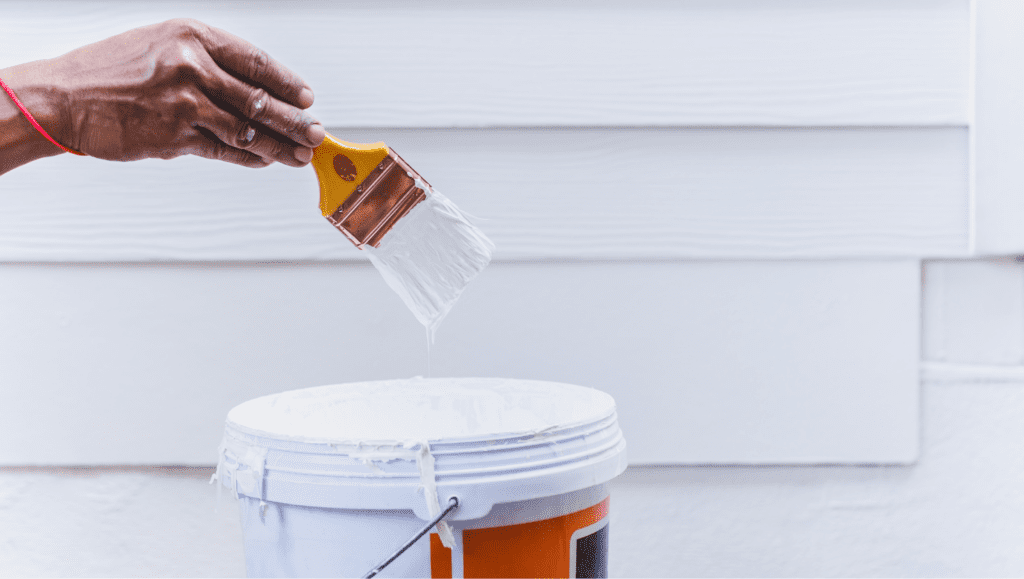
Choosing the right paint for your home’s exterior is a big deal, especially in Australia where we get everything from scorching sun to torrential rain. It’s not just about making your house look good; it’s about protecting it from the elements and saving yourself money in the long run. So, how do you pick the best paint for harsh Australian climates? Let’s break it down.
Importance Of High-Quality Paints
Using high-quality paint is the single most important thing you can do to ensure a long-lasting exterior paint job. Cheap paint might seem like a good idea at the time, but it will fade, crack, and peel much faster than a premium product. This means you’ll be repainting sooner, which costs more in both materials and labour. High-quality paints are formulated with better pigments and resins that stand up to UV rays, moisture, and temperature changes. They also tend to have better adhesion, so they’re less likely to blister or flake. Think of it as an investment in your home’s future.
Understanding Paint Grades
Paints come in different grades, each with its own price point and performance characteristics. Generally, you’ll find three main categories:
- Economy: These are the cheapest paints, and they’re best avoided for exterior use. They typically have low solids content, which means they don’t provide much coverage or protection.
- Mid-Grade: These paints offer a decent balance of price and performance. They’re a good option if you’re on a budget, but don’t expect them to last as long as premium paints.
- Premium: These are the most expensive paints, but they offer the best protection and longevity. They’re formulated with high-quality ingredients and advanced technologies to withstand harsh weather conditions. If you want your paint job to last, premium paint is the way to go. You can also consider Dulux Weathershield for long-lasting protection.
Choosing The Right Finish
The finish of your paint also plays a role in its durability and appearance. Here’s a quick rundown of the most common exterior paint finishes:
- Flat/Matte: This finish has a non-reflective surface that hides imperfections well. However, it’s not very durable and can be difficult to clean.
- Satin: This finish has a slight sheen that’s more durable and easier to clean than flat paint. It’s a good all-around choice for most exterior surfaces.
- Semi-Gloss: This finish has a higher sheen than satin and is even more durable and easier to clean. It’s a good option for trim and doors.
- Gloss: This finish has the highest sheen and is the most durable and easiest to clean. However, it can highlight imperfections, so it’s best used on smooth surfaces. Also, consider the impact of UV radiation when choosing your paint.
When choosing a paint finish, consider the type of surface you’re painting and the look you’re trying to achieve. For example, a satin or semi-gloss finish is a good choice for weatherboards, while a flat finish might be better for brickwork. Also, lighter colours tend to fade less over time, especially those with inorganic pigments.
Ultimately, selecting the right paint is about balancing cost, performance, and aesthetics. Do your research, talk to your local paint supplier, and choose a product that’s specifically designed for Australian conditions. It’ll be worth it in the long run.
Preparing Your Home For Exterior Painting
Before you even think about cracking open a tin of paint, proper preparation is key to a long-lasting and beautiful finish. It’s not just about slapping on some colour; it’s about ensuring the paint adheres correctly and protects your home from the elements for years to come. Think of it as laying the foundation for a stunning and durable exterior. This is especially important if you’re considering painting services in Perth.
Surface Preparation Techniques
Surface preparation is arguably the most important step in exterior painting. A poorly prepared surface will lead to premature paint failure, no matter how good the paint is. Here’s what you need to do:
- Cleaning: Start by thoroughly cleaning the exterior surfaces. This might involve pressure washing to remove dirt, grime, mould, and mildew. Use a suitable cleaning solution to tackle stubborn stains. Make sure to let the surface dry completely before proceeding.
- Scraping: Remove any loose or flaking paint with a scraper or wire brush. This creates a smooth, even surface for the new paint to adhere to. Don’t skip this step – loose paint will only cause problems down the line.
- Sanding: Sanding smooths out rough patches and helps the primer and paint bond properly. Focus on areas where you’ve scraped away old paint or where the surface is uneven. Use a medium-grit sandpaper for general sanding and a finer grit for smoothing.
Dealing With Existing Damage
Before painting, it’s crucial to address any existing damage to your home’s exterior. Ignoring these issues will only lead to bigger problems later on. Here’s what to look for and how to fix it:
- Rotting Wood: Replace any rotten or damaged wood. This is especially important around windows, doors, and trim. Use treated lumber to prevent future rot.
- Cracks and Holes: Fill any cracks or holes with exterior-grade filler. This prevents moisture from seeping in and causing further damage. Make sure the filler is compatible with the paint you’ll be using.
- Loose Nails or Screws: Hammer in any loose nails or tighten any loose screws. Replace them if they’re rusted or damaged. This ensures a secure and stable surface for the paint.
Choosing The Right Primer
Primer is the unsung hero of exterior painting. It creates a uniform surface for the paint to adhere to, improves adhesion, and helps to seal porous surfaces. Choosing the right primer is essential for a long-lasting finish. A good primer is the key to home protection.
- Type of Primer: Select a primer that’s specifically designed for exterior use and compatible with the type of surface you’re painting (e.g., wood, metal, concrete). There are also specialty primers for specific problems, such as stain-blocking primers for covering up water stains or tannin bleed.
- Application: Apply the primer evenly, following the manufacturer’s instructions. Use a brush, roller, or sprayer, depending on the size and texture of the surface. Allow the primer to dry completely before applying the paint.
- Tinting: Consider tinting the primer to match the colour of the paint. This can help to improve coverage and reduce the number of coats of paint needed. This is one of the painting tips before winter or summer to ensure longevity.
Preparing your home properly for exterior painting might seem like a lot of work, but it’s an investment that will pay off in the long run. By taking the time to clean, repair, and prime the surfaces, you’ll ensure a beautiful, durable, and long-lasting finish that protects your home from the elements. Don’t cut corners – it’s worth doing it right the first time. Also, consider how to protect your home exterior with paint.
Professional Application For Best Results
While a DIY approach to exterior painting might seem tempting, especially to save a few bucks, getting a professional in can make a world of difference. It’s not just about slapping on some paint; it’s about ensuring the job is done right, so your home looks great and is protected for years to come. Let’s look at why hiring a pro is often the best bet.
Benefits Of Hiring Experts
- Quality Finish: Professionals have the experience and tools to achieve a smooth, even finish that’s hard to replicate with a DIY approach. They know how to prep surfaces properly, apply paint evenly, and avoid common issues like brush strokes or drips. This is especially important if you’re aiming for a high-end look or want to maximise your home’s kerb appeal.
- Time Savings: Painting the exterior of a house is a time-consuming job. Experts can complete the project much faster, freeing up your weekends. Think about it – no more ladders, no more aching backs, and no more endless hours spent under the sun. Time is money, after all!
- Safety: Working at heights can be dangerous. Professionals have the right safety equipment and training to minimise risks. They’re insured too, so you won’t be liable if something goes wrong. It’s just not worth risking a fall to save a few dollars.
- Warranty: Many professional painters offer warranties on their work, giving you peace of mind. If there are any issues with the paint job down the track, they’ll come back and fix it. That’s something you definitely won’t get with a DIY job.
Common Mistakes To Avoid
Even if you’re set on hiring a professional, it’s good to be aware of some common pitfalls:
- Not checking references: Always ask for references and check them thoroughly. Talk to previous clients to get an idea of the painter’s workmanship and reliability. Don’t just rely on online reviews – a personal recommendation is worth its weight in gold.
- Skipping the contract: A detailed contract is essential. It should outline the scope of work, the materials to be used, the timeline, and the payment schedule. Make sure everything is clear and agreed upon before work begins. This protects both you and the painter.
- Ignoring surface preparation: Proper surface preparation is key to a long-lasting paint job. Don’t let the painter cut corners on this step. They should be cleaning, sanding, and priming the surfaces properly before applying the paint. If you’re looking for painting services in Perth, make sure they include surface preparation.
- Choosing the wrong paint: Not all paints are created equal. Make sure the painter is using high-quality, exterior-grade paint that’s suitable for your climate. Ask about the different types of paint available and their pros and cons. A good painter will be happy to advise you.
Ensuring Proper Techniques
So, how do you make sure your painter is using the right techniques? Here are a few things to look out for:
- Proper surface preparation: As mentioned earlier, this is crucial. The painter should be thoroughly cleaning the surfaces, removing any loose paint or debris, and sanding down any rough spots. They should also be applying a primer to ensure the paint adheres properly.
- Correct application: The paint should be applied in thin, even coats. Avoid thick, gloppy coats that can lead to drips and runs. The painter should also be using the right tools for the job, such as high-quality brushes and rollers.
- Attention to detail: A good painter will pay attention to the small details, such as cutting in neatly around windows and doors, and ensuring that all surfaces are properly covered. They should also be cleaning up after themselves and leaving your property tidy.
Getting a professional painter is an investment in your home. While it might cost more upfront, the long-term benefits of a quality paint job are well worth it. You’ll save time, avoid potential safety hazards, and enjoy a beautiful, long-lasting finish that protects your home from the elements. Plus, a fresh coat of paint can significantly increase your home’s value. It’s a win-win situation!
By understanding the benefits of hiring experts, avoiding common mistakes, and ensuring proper techniques, you can make sure your exterior painting project is a success. Don’t be afraid to ask questions, do your research, and choose a painter who is experienced, reliable, and committed to quality. Your home will thank you for it! Exterior house painting is a big job, so make sure it’s done right.
Maintaining Your Exterior Paint Job
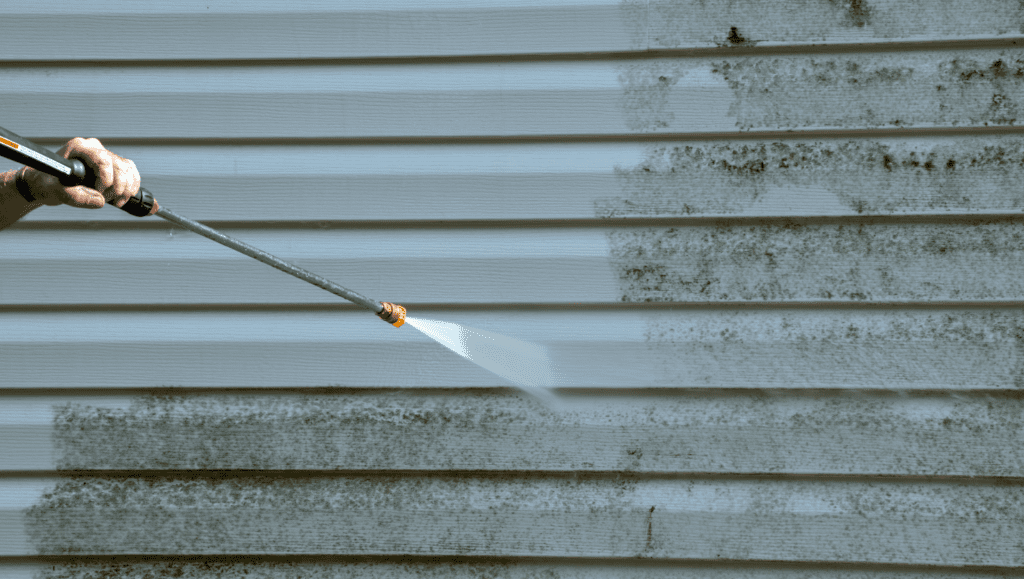
Once your home’s exterior is freshly painted, the work isn’t quite over. Proper exterior paint maintenance is key to ensuring your paint job lasts for years to come and continues to protect your home from the elements. Neglecting maintenance can lead to premature wear, fading, and costly repairs down the line. So, what does it take to keep your exterior paint looking its best?
Regular Cleaning And Inspections
Regular cleaning is the first line of defence against dirt, grime, and mildew. A simple wash-down a couple of times a year can make a huge difference. Use a soft brush or sponge and a mild detergent mixed with water. Avoid harsh chemicals or abrasive cleaners, as these can damage the paint finish.
Inspections are just as important. Look for any signs of wear and tear, such as:
- Cracks
- Peeling
- Blistering
- Fading
Addressing these issues early can prevent them from escalating into bigger problems.
Identifying Signs Of Wear
Catching problems early is crucial. Here’s what to look out for:
- Chalking: This is when the paint surface develops a powdery residue. It’s a sign that the paint’s binder is breaking down due to UV exposure.
- Cracking and Peeling: These are often caused by moisture getting behind the paint film. It can also be a sign of poor surface preparation before painting.
- Mould and Mildew: These thrive in damp, shady areas. They can stain and degrade the paint surface.
- Fading: This is a natural process, but it can be accelerated by harsh sunlight and poor-quality paint. Remember that effective painting strategies can help you avoid these issues.
Regular inspections, at least twice a year, can help you spot these problems early. Pay close attention to areas that are exposed to direct sunlight, moisture, or extreme weather conditions.
When To Repaint
Even with the best maintenance, exterior paint won’t last forever. Knowing when to repaint is essential to protect your home. Here are some telltale signs that it’s time for a new coat:
- Extensive cracking or peeling
- Significant fading or chalking
- Widespread mould or mildew growth that can’t be removed with cleaning
- Paint is more than 10 years old (even if it looks okay, it may be losing its protective qualities)
Repainting not only improves the appearance of your home but also provides a fresh layer of protection against the elements. Don’t wait until the damage is severe – a timely repaint can save you money in the long run.
Environmental Factors Affecting Exterior Paint
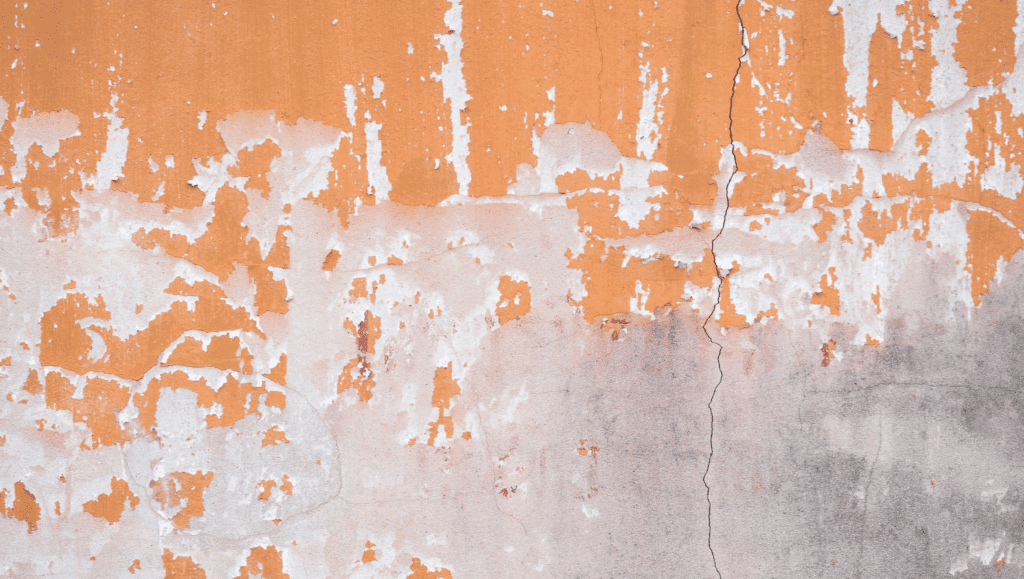
Your home’s exterior paint job isn’t just about aesthetics; it’s a shield against the elements. But the environment itself can be a major factor in how long that paint job lasts. Understanding these factors can help you make informed decisions about paint selection and maintenance.
Impact Of Sun Exposure
Sun exposure is a primary culprit when it comes to fading exterior paint. The sun’s ultraviolet (UV) rays break down the chemical bonds in the paint, causing the colour to fade and the paint to become brittle. Darker colours absorb more heat and UV radiation, making them more susceptible to fading than lighter colours. Choosing a weather-resistant paint with UV inhibitors can significantly extend the life of your paint job. Acrylic paints are a good choice because they are known for their UV resistance.
Effects Of Pollution And Dirt
Airborne pollutants and dirt can also wreak havoc on your exterior paint. These particles settle on the surface, creating a dull, dirty appearance. In coastal areas, salt air is particularly corrosive, leading to faster fading and peeling. Regular cleaning can help mitigate these effects, but it’s also important to choose a paint that’s resistant to dirt and mildew. Consider the importance of weatherproof paint coatings when making your selection.
Weather Variability
Australia’s diverse climate, from the tropical north to the temperate south, presents unique challenges for exterior paint. High humidity can cause paint to blister and peel, while extreme temperature fluctuations can lead to cracking. Choosing the right type of paint for your specific climate is crucial. For example, elastomeric paints are flexible and can bridge minor cracks caused by temperature changes. Don’t underestimate the value that professional painters for outdoor surfaces can bring to the table, especially with their knowledge of local conditions.
It’s worth noting that proper surface preparation is key to a long-lasting paint job. Ensure the surface is clean, dry, and free of any loose paint before applying a fresh coat. This will help the paint adhere properly and resist the damaging effects of the environment.
Here’s a quick guide to help you choose the right paint based on your climate:
- Tropical Climates: Choose paints with mildew resistance and UV protection.
- Coastal Areas: Opt for paints that are salt-resistant and can withstand high humidity.
- Temperate Regions: Select paints that can handle temperature fluctuations and moderate rainfall.
When it comes to painting the outside of your home, the environment plays a big role. Things like the weather, sunlight, and even pollution can affect how well your paint lasts. For example, strong sun can fade colours quickly, while rain can wash away paint if it’s not dry. To make sure your paint job looks great and lasts long, it’s important to think about these factors. If you want to learn more about how to protect your home’s exterior, visit our website for tips and expert advice!
Wrapping Up: Protecting Your Home with Exterior Painting
In summary, giving your home a fresh coat of paint isn’t just about looks; it’s about protection too. The right exterior paint acts as a shield against harsh weather, from scorching sun to heavy rain. Remember to pick the right time for painting, ideally avoiding the wet months, and consider the local climate when choosing your paint. Quality matters, so investing in good paint and hiring professionals can save you time and money in the long run. Keep your home looking great and standing strong against the elements by staying on top of your exterior painting needs.
Frequently Asked Questions
Why is exterior painting important for my home?
Exterior painting protects your house from harsh weather, pests, and mould. It also makes your home look nicer and can increase its value.
When is the best time to paint the outside of my house?
The best time to paint is during dry seasons, avoiding the monsoon months of June to September. Look for days with mild temperatures and low humidity.
What type of paint should I use for the exterior?
Choose high-quality paints that are designed for outdoor use. These paints can resist fading and damage from the sun and rain.
How do I prepare my house for painting?
Make sure to clean the surfaces well, fix any damage, and apply a good primer before painting. This helps the paint stick better and last longer.
Should I hire a professional to paint my home?
Hiring professionals can ensure the job is done right. They know the best techniques and can help avoid common mistakes.
How can I maintain my exterior paint job?
Regularly clean your home’s exterior to remove dirt and check for any signs of wear. Repaint when you notice fading or peeling.

